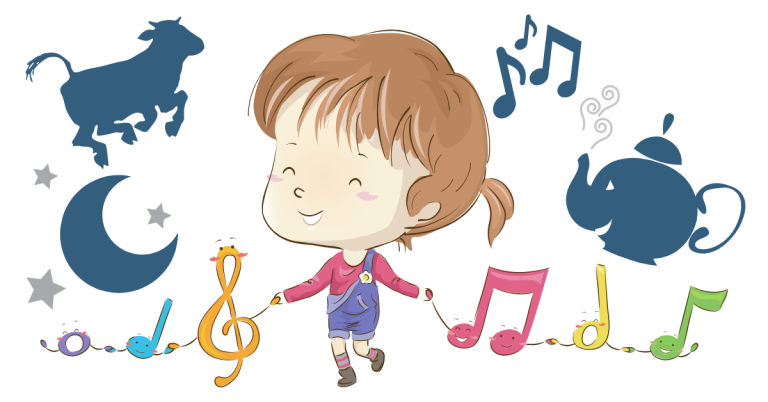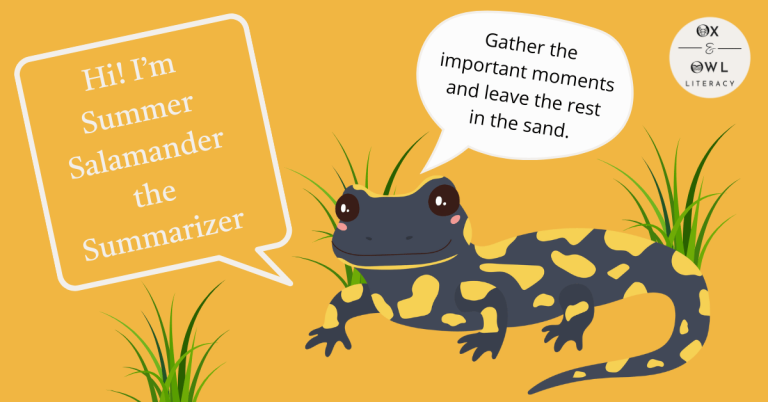Captivating Connections: The Dynamic Influence of Joint Attention on Early Learning
Joint attention is not only considered important for language development, but also plays a dynamic role in other areas of development, fostering social connections, cognitive development, and verbal and nonverbal communication skills.

Ox & Owl Questions to Ponder
When a child points and looks at you to “show” you something, what are they really asking for?
How do shared moments of attention help children learn what’s important, meaningful, or valued in their world?
Can you think of a moment when a young child tried to include you in their play or discovery? What made that moment work—or fall flat?
Could joint attention be one of the first “conversations” a child ever has—even before they can speak?
In what ways does joint attention help children build the foundation for understanding that others have their own thoughts, feelings, and viewpoints?
Ever noticed how kids pay better attention when you’re genuinely interested too? Could that be the secret to helping them build lifelong focus?
In the exciting landscape of early childhood, where every day is a new adventure, there’s a quiet yet influential player in the background – joint attention. It’s the connection that happens when caregivers and little ones share a moment, a shared gaze or attention to something. Essentially it is a way of experiencing connection with another person; moments of joint attention strengthen bonds and create shared experiences. These shared moments contribute to the formation and maintenance of relationships and build important life long skills for future learning.
What is Joint Attention?
Joint attention refers to the shared focus of attention experienced through gestures, actions, gaze, speech, and emotions between oneself, another person, and an object or event.
Joint attention occurs when two people are attending to the same object or sharing in an experience or event in which there is awareness of another’s intention or interest.
To have joint attention, both people need to be aware they are focused on the same thing. This requires both parties shifting their focus between the object and each other and communicating in some way that they are experiencing something together, whether through eye contact and gaze, gestures, touch, or language.
Joint attention is more than just sharing a discovery, it is a form of giving and receiving connection, confirmation, and engagement. When someone makes a bid for attention, it says, “This matters to me—does it matter to you too?” .
In that moment, the individual isn’t just pointing at an object—they’re pointing toward a relationship built on shared understanding.

Joint attention shapes important social-emotional learning and bonding, fostering turn-taking, social cues interpretation, and empathy, laying the groundwork for strong social bonds and an understanding of diverse perspectives.
Ox & Owl Literacy
The Importance of Joint Attention in Early Childhood Development
Joint attention acts as a vibrant thread connecting children to their cultural roots and social surroundings, shaping their identity and fostering inclusivity through shared experiences.
Joint attention shapes important social-emotional learning and bonding, fostering turn-taking, social cues interpretation, and empathy, laying the groundwork for strong social bonds and an understanding of diverse perspectives.
Joint attention is how children begin to decode their culture, their environment, and the emotional landscape of the people around them. When adults consistently respond to a child’s bids for attention—pausing to notice the butterfly, naming the truck, smiling at the dog barking—children begin to learn what matters. Over time, they internalize what their caregivers respond to and begin to shape their curiosity around those cues. These shared experiences become social signals: This is interesting, this is safe, this is worth exploring. These moments also communicate to the child that their presence and interactions are valued.

Cultural and Social Learning
Joint attention acts as a vibrant thread connecting children to their cultural roots and social surroundings, shaping their identity and fostering inclusivity through shared experiences.
Joint attention shapes important social-emotional learning and bonding, fostering turn-taking, social cues interpretation, and empathy, laying the groundwork for strong social bonds and an understanding of diverse perspectives.
Joint attention is how children begin to decode their culture, their environment, and the emotional landscape of the people around them. When adults consistently respond to a child’s bids for attention—pausing to notice the butterfly, naming the truck, smiling at the dog barking—children begin to learn what matters. Over time, they internalize what their caregivers respond to and begin to shape their curiosity around those cues. These shared experiences become social signals: This is interesting, this is safe, this is worth exploring. These moments also communicate to the child that their presence and interactions are valued.

Cooperative Processes and Learning
Joint attention promotes collaborative play, nurturing negotiation and cooperation skills, while also building a sense of community among children. When a child invites another—peer or adult—into their focus through gestures, eye contact, or showing an object, they are initiating a moment of shared experience that sets the stage for cooperative learning. These moments become opportunities for children to co-construct meaning, solve problems together, and build mutual understanding.
Whether or not that invitation is accepted can significantly shape the outcome of the interaction. A warm, responsive adult or peer who joins the child’s focus helps transform that moment into a shared experience—one that supports connection, communication, and co-exploration. In contrast, when those bids for attention are overlooked or dismissed, the opportunity for collaboration may fade, and the child may retreat from the interaction.
Engaging in joint attention activities requires a level of social regulation – which involves the ability to navigate shared spaces, resources, and interactions. Through these shared moments, children gain essential practice with turn-taking and develop effective communication skills. They begin to grasp the rhythm of social interaction—when to speak, when to listen, and how to respond. These experiences foster the communication and perspective-taking skills necessary for collaborative learning in both social and educational settings.
Language Acquisition & Communication
Before children have words, they use eye contact, pointing, and shared focus to communicate. These early “conversations” are rich in emotional meaning and lay the foundation for verbal communication. Through joint attention, children learn that their thoughts and interests can be shared, understood, and responded to—and that’s the heart of communication.
As children are learning language, joint attention primes them to learn how to appropriately link words to objects, features, people, places, and events. A child’s vocabulary size can be predicted by the ability to respond and initiate bids for joint attention because the words children hear during these engagements are strongly linked to a child’s vocabulary development.
Conversations that accompany moments of joint attention provide children with opportunities to hear new words, phrases, and sentence structures, which, in turn, contribute to the development of their own expressive language skills.

Did You Know?
Reading aloud stimulates the development of neural pathways in the brain.
These new neural connections, improve a child’s ability to understand language and process information.

Food for Thought
If stories act like mirrors and windows, how does this change your thoughts about the stories you choose?
Reflect on how these stories can resonate with your little learner’s experiences and offer glimpses into other worlds and perspectives.
Social Cognitive Abilities
Joint attention involves a rich exchange of nonverbal communication cues, such as gestures, facial expressions, and body language. Children, through shared focus, become adept at interpreting and responding to these nonverbal signals, enhancing their overall proficiency in nonverbal communication. This skill is vital for effective social interactions throughout life.
Joint attention also plays a fundamental role in the development of theory of mind – the ability to understand that others may have thoughts, feelings, and perspectives different from one’s own. When engaged in joint attention activities, children learn to interpret social cues, understand the intentions of others, and develop a more nuanced appreciation for the mental states of those around them.
This helps children develop perspective-taking, allowing children to see the world through the eyes of others and enhancing their ability to respond compassionately to different emotions.
Attention, Focus, and Executive Functioning Skills
Joint attention serves as a foundational cornerstone for the blossoming of essential cognitive skills that pave the way for children’s learning strengths and abilities.
Joint attention creates positive associations with learning. Whether exploring new concepts, solving problems together, or participating in shared activities, children come to view learning as an enjoyable and collaborative process. This positive association fosters intrinsic motivation, leading to increased concentration and focus during educational endeavors.
As children engage in joint attention activities, whether it’s following an adult’s gaze during play or focusing on shared reading, they learn to manage and control their attention. Attention regulation involves the ability to focus on specific stimuli while filtering out distractions. Joint attention provides children with the early experiences necessary for honing this skill. This ability is paramount in classroom settings where students need to concentrate on lessons, assignments, and tasks.
Joint attention also acts as a training ground for the development of many executive functions. Executive function plays a pivotal role in a child’s ability to plan, organize, and execute tasks and refers to a set of mental skills that include working memory, cognitive flexibility, and inhibitory control.
The intentional incorporation of joint attention activities by caregivers and educators has far-reaching benefits, shaping a child’s holistic development and preparing them for a successful and fulfilling learning and literacy journey.
Ox & Owl Literacy

Key OOLiteracy Takeaways
Nurturing Little Minds, Sparking Big Dreams

I’m happy you’re here!
Hi, I’m Julie, the passionate creator of Ox & Owl Literacy. I enjoy empowering families and educators with wonderful resources to inspire fun, imaginative, and joyful learning opportunities for young kiddos. You’ll find lots of recommended books, reading resources, and creative learning activities on this site aiming to help children fall in love with language, books, reading, and the transformational power of stories.









